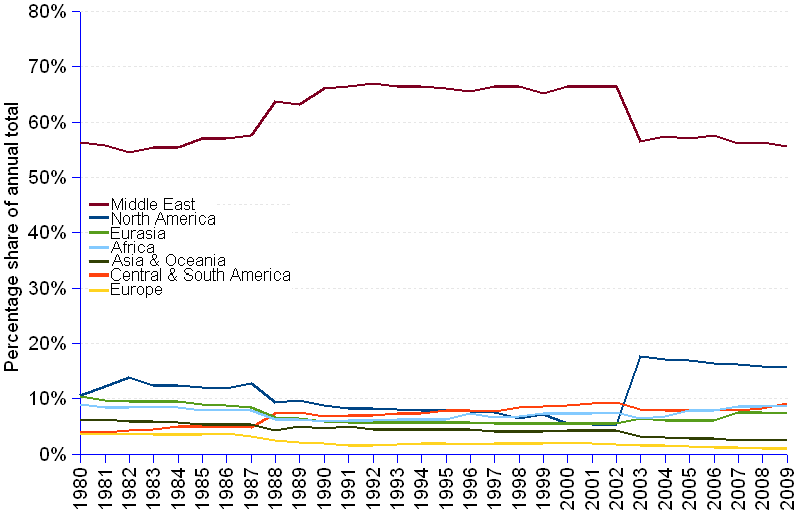

Although the Middle East has seen an erosion of its share, due largely to the significant findings in Canada in the early 2000's, the region is undoubtedly the richest in the world, accounting for a share of 55.6% (752.9 billion barrels) of about 1,475 billion barrels current world reserves. Reserves are particularly huge in Saudi Arabia (262.6 billion barrels), Iran (137 billion barrels), Iraq (115 billion barrels), Kuwait (104 billion barrels) and the United Arab Emirates (97.8 billion barrels).
In North America, Canada reserves have grown at an annual rate of 11% to the level of 175.2 billion barrels, while the USA has already reached the stage of having to pump oil from its shrinking reserves. Most important reserves in South America are to be found in Venezuela (211 billion barrels). In Africa, they are located in Libya (46 billion barrels) and Nigeria (37 billion barrels). Russia, in Eurasia, still has sizable reserves (60 billion barrels) but they are decreasing.
The list of countries where the largest oil reserves are located resembles a selection of those troubled nations that fill prime time news bulletins and newspapers first page reports. War and violence, cabinet intriguing, international conspiracy, street unrest, and large scale murder seem indeed strongly correlated with sizable crude oil reserves. Quite a mixed blessing.